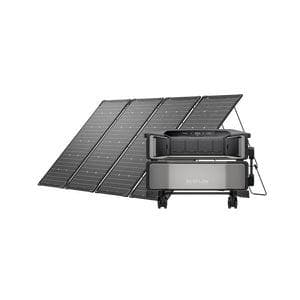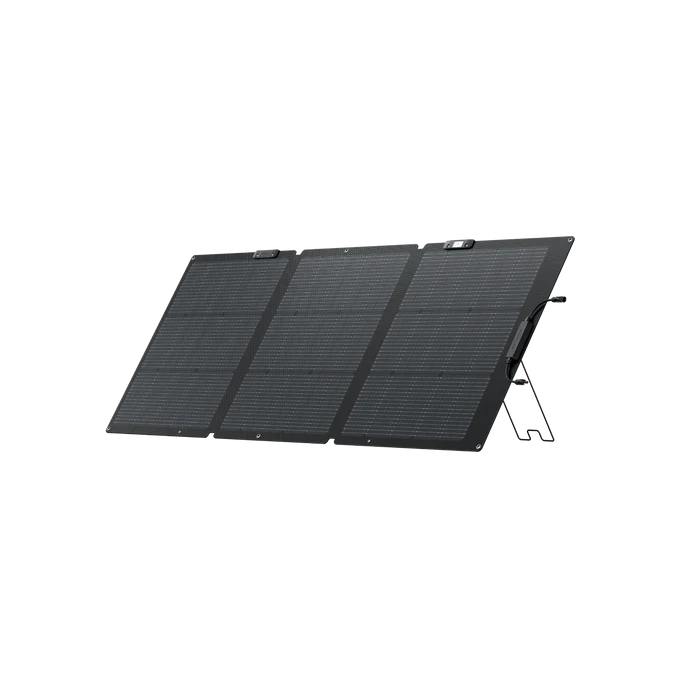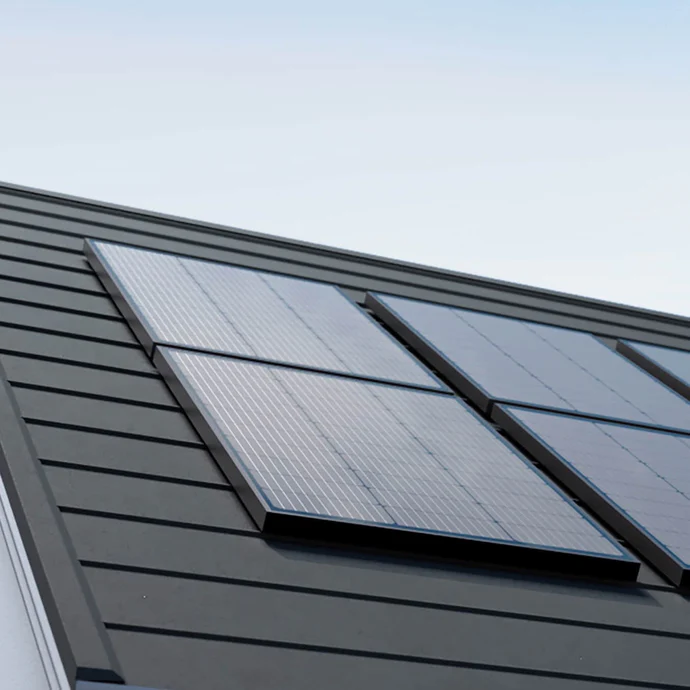How to Build a DIY Solar Panel Kits for Beginners
The advantages of solar energy are clear—it's renewable, cost-effective, and environmentally friendly. It also enables you to reduce your carbon footprint and save a lot on electricity. If you're new to solar, the idea of installing your own system may be intimidating, but with a DIY approach that's straightforward, it's quite achievable. This guide will help beginners, like you learn the fundamentals of installing your own solar energy system, whether you're looking to reduce energy costs or transition to sustainable living.
Which System Is Right for You?
Before jumping into the DIY solar panel installation procedure, one should have a good understanding of the two broad types of solar energy systems: on-grid and off-grid. Both are beneficial in their own ways and suited for various needs.
Here's a quick table of the main points for On-grid and Off-grid solar energy systems:
Feature | On-grid solar energy systems | Off-grid solar energy systems |
Connection to Grid | Connected to the electricity grid | Not connected to the grid |
Energy Storage | No storage needed, excess energy is fed back to the grid | Energy is stored in batteries for later use |
Advantages | - Cost savings through surplus energy feedback- Easy installation (no batteries required)- Lower initial setup cost | - Full independence from the grid- Customizable based on energy needs- Ideal for remote homes or RVs |
Ideal Use | Homes connected to the grid, seeking bill savings | Remote locations or off-grid living |
Basic Components of a DIY Solar Panel Kit
Regardless of whether you choose an on-grid or off-grid system, the basic components for a solar setup remain largely the same. Below are the key components you'll need to consider for your DIY solar project.
Solar Panels
Function: Solar panels are responsible for converting sunlight into electricity.
Selection Tip: Choose the right wattage for your needs. Panels typically come in sizes like 100W, 200W, or 300W, and you'll need to match the panel's capacity to your system's power requirements.
Inverter
Function: The inverter is essential for converting the DC (direct current) electricity generated by the solar panels into AC (alternating current) that can be used to power your home.
Selection Tip: If you're setting up an on-grid system, make sure to choose an inverter that is compatible with your utility grid. Off-grid systems, on the other hand, require a specialized inverter that can handle battery storage.
Battery Storage (For Off-grid Systems)
Function: Batteries store excess energy generated during the day, which can be used at night or on cloudy days.
Selection Tip: Match the battery size to your energy needs. The larger the battery capacity, the more energy you can store for use during off-sunlight hours.
Charge Controller (For Off-grid Systems)
Function: A charge controller is used to regulate the voltage and current going into the batteries to prevent overcharging or deep discharge, which can damage the batteries.
Selection Tip: Ensure that the charge controller is compatible with both your battery type and your solar energy system's power requirements.
Mounting Brackets & Hardware
Function: These secure the solar panels in position, making sure that they are at the correct angle to receive the most sunlight.
Selection Tip: Opt for mounting hardware that's sturdy and appropriate for your type of roof.
Cables & Connectors
Function: Connectors and cables are used to link the solar panels, inverter, batteries, and other system parts together.
Selection Tip: Make sure to select cables that are rated for outdoor use and can handle the current your system produces.


How to Choose the Right Solar Panel Kit
When setting up your DIY solar energy system, it's important to carefully consider your power needs and system requirements. The following steps can guide you through the process of choosing the right kit for your home.
Determine Your Power Needs
First, assess your total power consumption. Calculate how much energy you typically use on a daily basis (in kWh) and identify which appliances or devices will be powered by the solar energy system.
Choose the System Type: On-grid vs. Off-grid
If you're connected to the grid and want to save on electricity, an on-grid system is the best choice. If you prefer to be independent from the grid or live in a remote area, consider an off-grid system.
Select the Right Solar Panels
Based on your power needs, decide on the number and type of solar panels required. Consider factors like location (how much sunlight your area gets), the available space for installation, and your budget.
Choose an Inverter
Your inverter should match the power output of your solar energy system. Choose an inverter that supports the energy output you need, whether you're using an on-grid or off-grid setup.
DIY Installation 6 Steps
With all your components ready, it's time to begin installing your solar energy system. These steps will guide you through the process.
Prepare the Installation Area
Choose a location on your roof or another area that receives direct sunlight for most of the day. Clear any obstacles that could block sunlight or interfere with the setup.
Install Mounting Brackets and Attach Solar Panels
Secure the mounting brackets to the installation surface, then attach the solar panels, ensuring they face the optimal direction for maximum sunlight exposure.
Connect Solar Panels to the Inverter
Use the appropriate cables to connect the solar panels to the inverter, ensuring secure and correct wiring.
Install Batteries and Charge Controllers (For Off-grid Systems)
Set up your battery storage system and connect it to the inverter. Also, install the charge controller to protect your batteries from overcharging.
Connect to the Grid (For On-grid Systems)
If you're setting up an on-grid system, you'll need to connect the inverter to the utility grid, ensuring that all local electrical codes are met.
Testing and Troubleshooting
After installation, test the system to ensure everything is working properly. Check the power output and battery charge levels to confirm that the system is operating efficiently.


Common DIY Mistakes to Avoid
While installing your own solar energy system can be a rewarding experience, there are some common mistakes that many DIYers make. Here are a few to watch out for:
Ignoring Permits and Safety Protocols
When installing a DIY solar energy system, make sure to follow local permits, electrical codes, and safety rules. If you don't, it could cause violations and make the system unsafe. Always check the local regulations before starting your project.
Incorrect Calculation of Solar Panel Numbers
Not calculating the required number of solar panels can lead to either insufficient power or wasted resources. Make sure to do the math to meet your energy needs.
Selecting the Wrong Battery Size
The battery size is crucial for off-grid systems. An undersized battery won't store enough energy, while an oversized battery could waste space and money.
Incompatible Inverter
Using an inverter that doesn't match your appliances' voltage can lead to system failure or damage to household electronics.
Neglecting Battery Management
If your off-grid system doesn't include a battery management system (BMS), your batteries could suffer from overcharging or over-discharging, reducing their lifespan.
Improper Wiring
Poor wiring can lead to shorts or even fire hazards. Make sure all connections are done according to standard electrical practices.
Mismatched Battery Storage and Usage Time
For off-grid systems, make sure your battery storage can meet your energy needs during times without sunlight. Insufficient storage can leave you without power when you need it most.
Skipping the Testing Phase
Skipping the testing phase after installation can lead to unrecognized issues. Thorough testing ensures that your system is working as intended.
Improper Panel Positioning
Improper placement of your solar panels can result in a tremendous decline in energy efficiency. Ensure your panels are at the right angle to get the maximum amount of sunlight.
If you find the DIY procedure too overwhelming, buying a pre-assembled solar kit is a simpler and time-saving option. The kits contain all the necessary components pre-assembled and usually come with step-by-step mounting instructions. This spares you from frustrations during the installation. As a beginner, this is a simpler and safer option.
One such great option is the EcoFlow 400W Portable Solar Panel. Not only does it provide high charging efficiency, but it's also very convenient for outdoor use. Here's why you might like it:
● 400W solar input lets you charge faster and eliminates long wait times.
● Up to 23% conversion rate maximizes energy efficiency, so you get the most out of every ray of sunlight.
● Durable, multi-layered materials ensure the panel withstands the test of time and weather.
● Self-supporting, adjustable angle design makes it easy to angle the panel for optimal sun exposure.
● IP68 waterproof rating means it performs reliably, even on rainy or humid days.
● Compact, folding design allows for easy transport, no matter where you are.
Not only is it an efficient solar product, but it's also the ideal companion for your outdoor adventures, travel, or everyday power needs.


Conclusion for DIY Solar Energy System
To sum it up, going solar is a smart, eco-friendly choice that can save you money in the long run. Whether you're tackling a DIY setup or opting for a ready-made solar panel kit, it's all about matching the right system to your needs. Get the right components, avoid common mistakes, and enjoy the power of the sun—your home and the planet will thank you!
FAQs about Installing the Solar Energy System
Q1: Do I need a battery for an on-grid system?
On-grid solar energy systems do not require batteries because they utilize the power grid as a storage of excess energy. If your solar panels produce electricity more than your home uses, the surplus flows back to the grid, and you can receive credits or compensation from the utility company. Batteries are only required for off-grid systems, which are not connected to the grid. Off-grid systems store energy in batteries so that you can have energy at night or when sunlight is insufficient, like during cloudy days or adverse weather.
Q2: Can I install solar panels myself, or should I hire a professional?
It is possible to install solar panels yourself, particularly with DIY kits that make it easier. Nevertheless, you have to pay close attention to all of the instructions to make sure you don't make any errors. If you are not comfortable with electrical and roof work, you may want to consider hiring someone. Professional installers have the training to manage the technicalities of installation and to make sure that the system is efficient and safe. Although there may be some cost savings with DIY installation, professional installation ensures long-term dependability and adherence to local building codes and regulations.
Q3: Is solar energy enough to power my entire home?
Solar can generate electricity for an entire home, but it depends on your energy use, your location, and your solar energy system size. If you have plenty of sunshine, and a solar energy system that's the right size for your home's energy demands, you might be able to run your entire home. If you have less sunshine or use a lot of electricity, however, you might need a larger system or other sources of power. A thorough assessment of your solar and energy potential will decide if solar is enough.